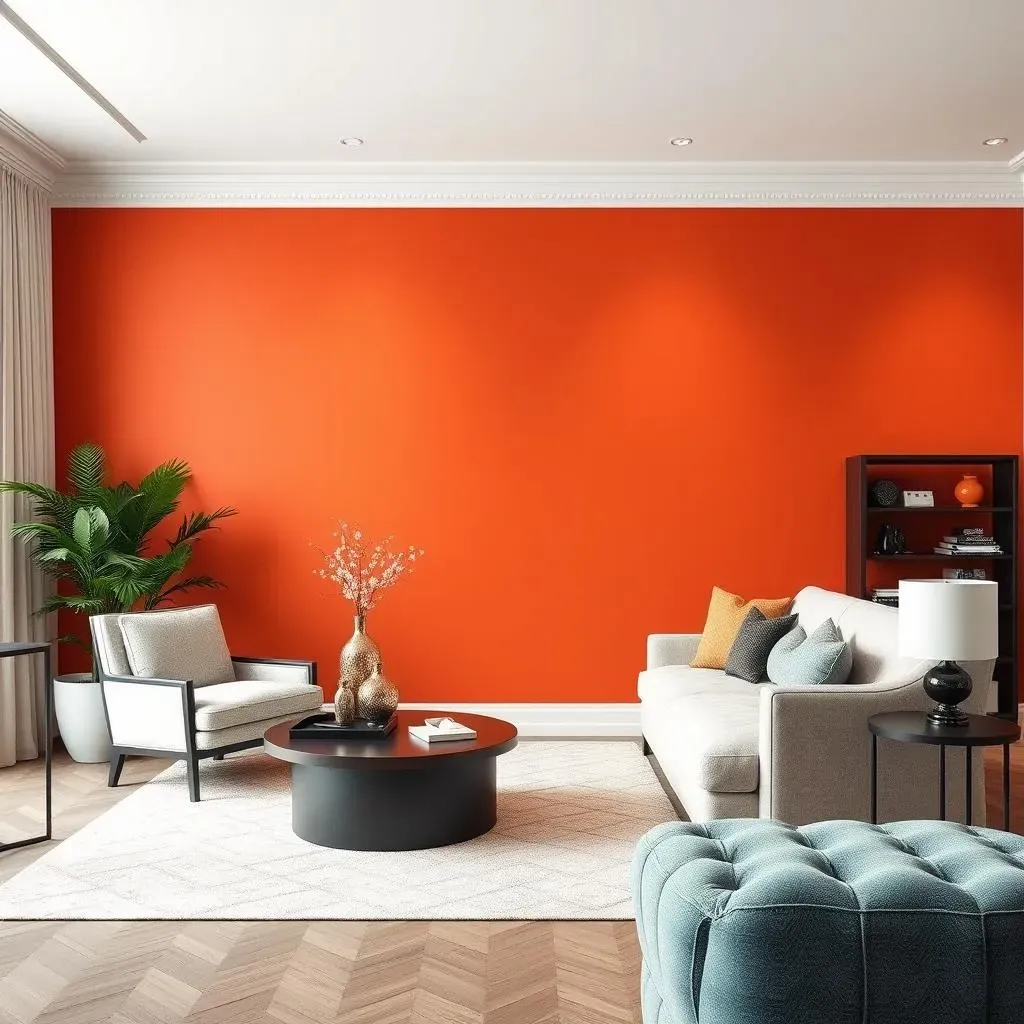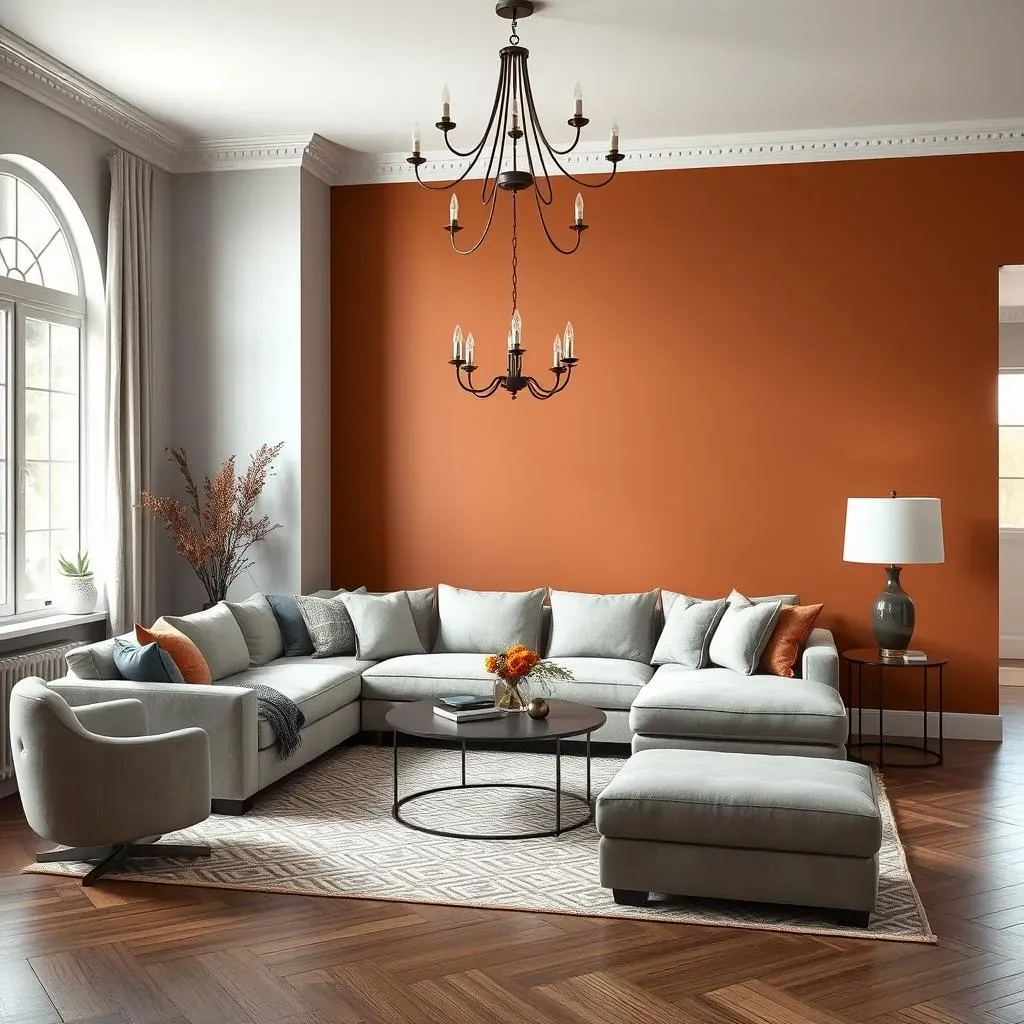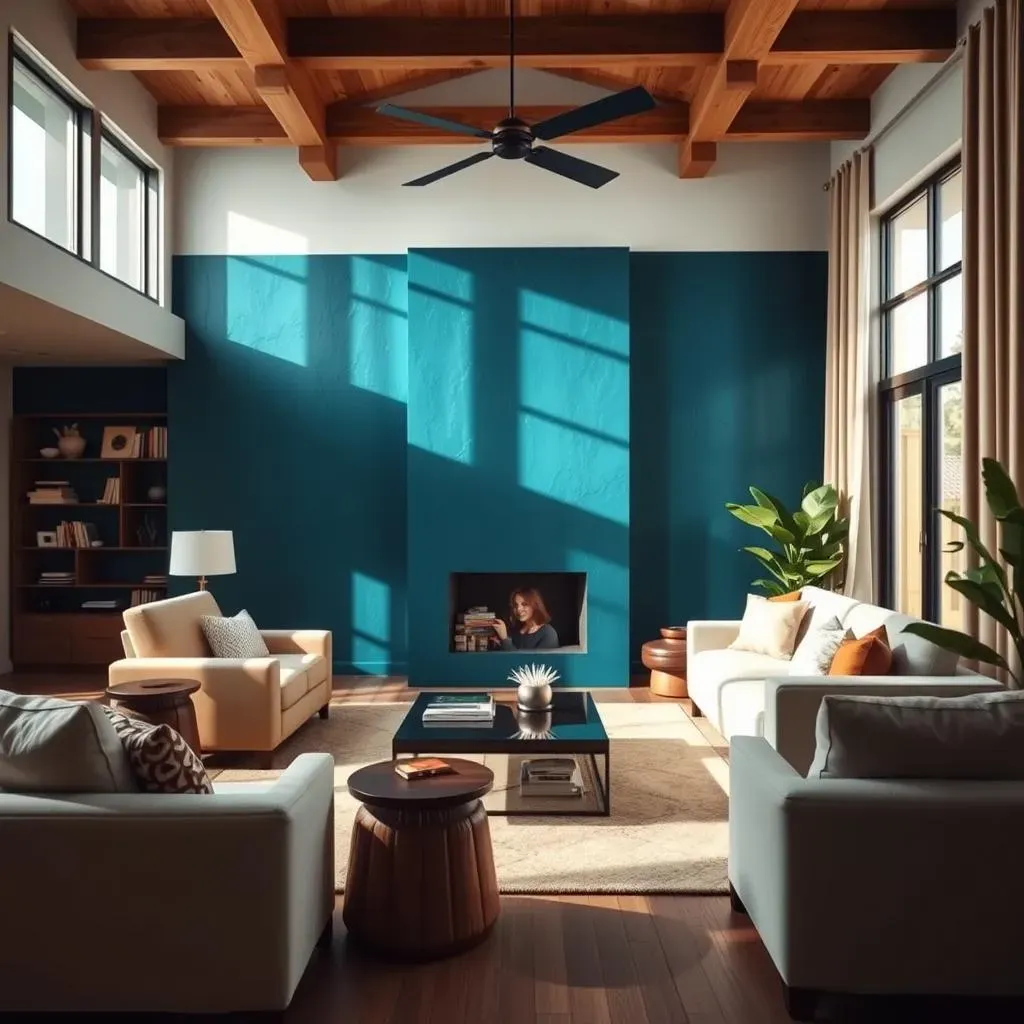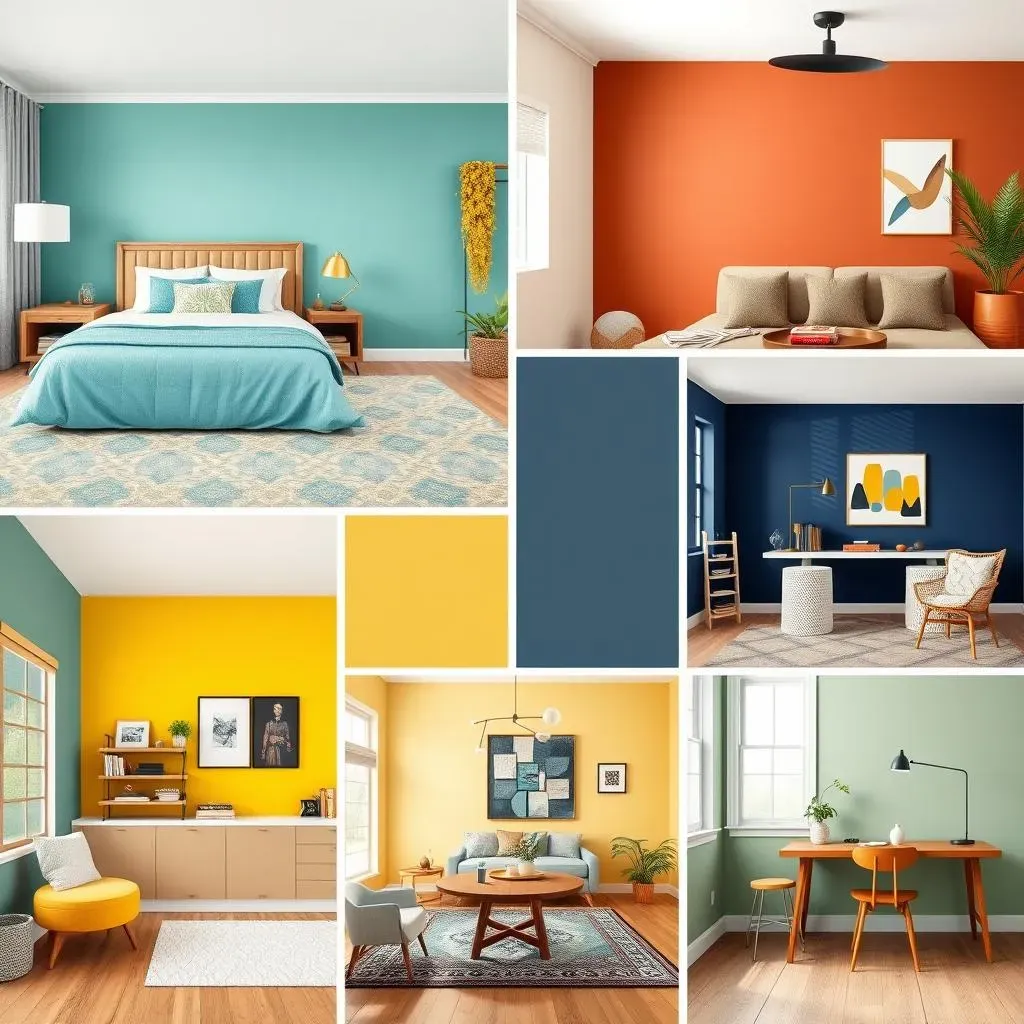Table of Contents
Tired of staring at the same old boring walls? Me too! That's where the magic of a paint accent wall comes in. It's like giving your room a stylish superhero cape, instantly adding personality and a serious wow factor. This isn't just about slapping on some color; it's about making a statement, creating a focal point, and completely changing the vibe of your space. In this article, we're going to explore a ton of fantastic paint accent wall ideas for every room in your house, from cozy bedrooms to lively living rooms. We'll also break down how to pick the perfect paint color and give you some easy-peasy tips to make sure your accent wall looks like a pro did it. So, grab your brushes, and let's get ready to transform those walls from drab to fab!
Why Choose a Paint Accent Wall?

Why Choose a Paint Accent Wall?
Okay, so you're thinking about a paint accent wall, right? It's not just some random design trend; it's a game-changer. Seriously. Think of it like this: your room is a stage, and the accent wall is the star. It’s a super easy way to inject personality and style without needing a total room makeover. A single, well-chosen wall can completely transform the feel of a space, adding depth, creating a focal point, or even making a small room feel bigger. Plus, it's way less commitment than painting an entire room a bold color. You can experiment, have some fun, and if you don’t love it, it’s just one wall to repaint. It's a low-risk, high-reward kind of design move, and I am here for it.
Paint Accent Wall Ideas for Every Room

Paint Accent Wall Ideas for Every Room
Alright, let's talk rooms! Because the best part about paint accent walls is that they're not a one-size-fits-all deal. You can totally customize them to fit any space. In the bedroom, for example, a deep, calming blue or a soft, earthy green can create a super relaxing vibe, perfect for winding down after a long day. Think about using the wall behind your bed as the accent; it's a natural focal point. Moving into the living room, that's where you can go a little bolder. A vibrant teal or a warm terracotta can really energize the space, especially if you're looking to make a statement. And don't forget about kitchens and bathrooms! A subtle, textured gray or a pop of sunny yellow can add a touch of personality without being overwhelming. Basically, every room is a blank canvas just waiting for its accent wall moment.
Now, I know what you're thinking: "Okay, cool, but what colors actually work?" I get it; staring at a paint swatch wall can be intimidating. So, let's break it down a bit. For bedrooms, I'm a big fan of calming colors like soft blues, greens, and grays. They create a peaceful atmosphere. For living rooms, don't be afraid to experiment with richer tones like deep blues, emerald greens, or even a warm mustard yellow for a cozy feel. And in smaller spaces like kitchens and bathrooms, lighter colors can help make the room feel more open. Think about using a bright white, a soft cream, or a light pastel to keep things airy and fresh. It's all about finding the right balance of personality and practicality.
Room | Color Suggestions | Mood/Effect |
|---|---|---|
Bedroom | Soft Blues, Earthy Greens, Light Grays | Calming, Relaxing, Peaceful |
Living Room | Teal, Terracotta, Emerald Green, Mustard Yellow | Energetic, Bold, Cozy |
Kitchen/Bathroom | Light Gray, Sunny Yellow, Bright White, Soft Cream | Fresh, Open, Airy |
How to Select the Perfect Paint for Your Accent Wall

How to Select the Perfect Paint for Your Accent Wall
Understanding Color Theory
Okay, so you're ready to pick a color, but where do you even start? Let's talk color theory, but don't worry, it's not as scary as it sounds. Think of the color wheel like your best friend. Colors that are next to each other, like blues and greens, are called analogous colors, and they create a really harmonious, pleasing look. But if you want some drama, you need to look at complementary colors, which are opposite each other on the wheel, like blue and orange, or red and green. They create a striking contrast that can really make your accent wall pop. It's all about figuring out what kind of vibe you're going for – calm and collected, or bold and exciting.
And don't forget about shades and tints! A shade is when you add black to a color, making it darker, while a tint is when you add white, making it lighter. This is super useful when you want to play with the intensity of a color. For example, you might love a bright red, but a darker shade of burgundy might be a better fit for a sophisticated bedroom accent wall. Getting familiar with these basic color ideas will help you to make your paint choices with more confidence.
Considering Your Room's Features
Now, let's get real about your room. You can't just pick a color willy-nilly. You need to consider what's already there. What's the natural light like? If your room is flooded with sunshine, you can get away with deeper, richer colors. But if it's a bit on the darker side, you'll want to stick with lighter hues to keep things bright and airy. Also, think about your furniture and decor. Your accent wall shouldn't clash with your existing stuff; it should complement it. If you have a lot of warm wood tones, cool colors like blues and greens can create a nice balance. And if your furniture is mostly neutral, you can go a little wilder with your accent wall color. The key is to create a cohesive, balanced look that you love.
One more thing to consider is the size of the wall itself. A huge wall might be begging for a bold color, while a smaller wall might look better with something subtle. Think about the architectural details too. If you have a fireplace, a built-in bookshelf, or some cool molding, an accent wall can be the perfect way to highlight these features. It's like putting a spotlight on the things that make your space unique.
Consideration | Description | Impact |
|---|---|---|
Natural Light | Amount of sunlight a room receives. | Affects how colors look; lighter for darker rooms, deeper for brighter ones. |
Existing Furniture | Colors and style of your furniture and decor. | Accent wall should complement, not clash, with the room's existing elements. |
Wall Size | Dimensions of the wall you're painting. | Large walls can handle bold colors, while smaller ones might look better with subtle tones. |
Architectural Details | Unique features like fireplaces or molding. | Accent wall can highlight these features and make them stand out. |
Testing and Finalizing Your Choice
Alright, you've got a few colors in mind, but before you commit, you absolutely need to test them out. Seriously, don’t skip this step. Paint a small patch of each color on your wall and live with it for a few days. Look at it at different times of the day because the way light hits the color can make a huge difference. What looks amazing in the morning might look completely different in the evening. It’s like trying on clothes before you buy them; you want to make sure it fits the way you want it to.
And don't be afraid to get samples of different shades of the same color. Sometimes a slightly lighter or darker version can make all the difference. Once you’ve tested everything, take a step back and see which one makes your heart sing. Pick the color that makes you smile every time you walk into the room. After all, you’re the one who’s going to be living with it, so you need to love it. And remember, it's just paint. If you don't like it, you can always change it. The most important thing is to have fun and express your personality.
Tips for Painting Your Accent Wall

Tips for Painting Your Accent Wall
Alright, you've picked your perfect color, now it's time to actually paint that accent wall. Don't worry, I've got you covered with some easy-to-follow tips. First things first, prep is key! This means cleaning your wall to remove any dust or grime, and then taping off the edges with painter's tape. I know, it seems like a pain, but trust me, it will save you from messy edges and a lot of frustration. Use good quality tape, press it down firmly, and don't be shy with it. If you have any holes or cracks, now is the time to fill them with spackle and sand them smooth. A smooth wall equals a smooth paint job.
Next up, it's time to get your paint on! Start by using a brush to paint along the edges and corners, this is called "cutting in". This creates a nice, clean line before you use a roller to fill in the rest. When you're rolling, make sure to load your roller evenly with paint and use long, smooth strokes. Don't press too hard, let the roller do the work. And if you need to do a second coat, make sure the first one is completely dry before you start. Patience is key here, you don't want to ruin all your hard work by rushing it. It is better to do two thin coats than one thick gloppy one. And finally, when you are done painting, remove the tape while the paint is still a little wet to avoid paint peeling off with the tape.
And here's a little tip for you: if you are doing a bold color, consider using a primer first. It will help the color pop and ensure you get the coverage you want. Also, don't be afraid to ask for help at the paint store. They can give you great advice on what kind of paint and tools you need for your project. Painting an accent wall should be fun, not stressful. So, crank up some music, grab your brushes, and let's get creative!
Step | Description | Why it's Important |
|---|---|---|
Prep the Wall | Clean, tape edges, fill holes. | Ensures smooth paint application and clean lines. |
Cut In | Use a brush to paint edges and corners. | Creates a neat border for the roller. |
Roll the Paint | Use long, smooth strokes with a loaded roller. | Ensures even coverage and a professional finish. |
Second Coat | Apply a second coat after the first is dry. | Provides full coverage and vibrant color. |
Remove Tape | Peel off tape while paint is still slightly wet. | Prevents paint from peeling off with the tape. |
